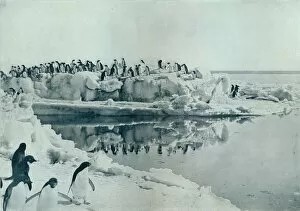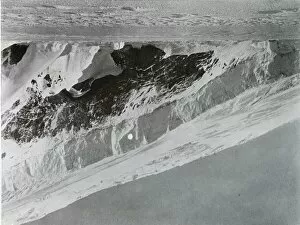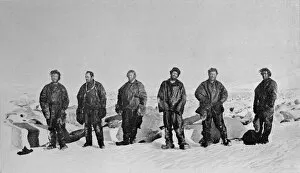G Murray Levick Collection
"G Murray Levick: Capturing the Untamed Beauty of Antarctica" Step into the mesmerizing world of G Murray Levick
All Professionally Made to Order for Quick Shipping
"G Murray Levick: Capturing the Untamed Beauty of Antarctica" Step into the mesmerizing world of G Murray Levick, an artist who immortalized the wonders of Antarctica through his breathtaking paintings. In 1911, during the Terra Nova Expedition led by Captain Robert Falcon Scott, Levick found himself surrounded by nature's raw magnificence. One of his notable works is "Hansen's Grave On Cape Adare, " a poignant depiction of a lonely grave amidst icy cliffs. The painting evokes a sense of solitude and pays homage to those who braved this unforgiving land. In "Launch of the Pram, " c1911, we witness Levick's ability to capture movement and excitement as explorers set sail in their small boat. The vibrant colors and dynamic brushstrokes transport us back to that momentous day when dreams took flight. Levick also had an eye for wildlife encounters. His masterpiece "Skua Gulls Fighting Over Some Blubber" showcases these fierce birds battling over a precious meal. It serves as a reminder that survival in this harsh environment often requires relentless determination. "Penguins Promenade, " c1911, transports us to a whimsical scene where adorable penguins waddle along icy shores with undeniable charm. Through Levick's artistry, we can almost hear their playful chatter echoing across the frozen landscape. "Dugdale Glacier" reveals another facet of Antarctica's beauty—a majestic ice formation towering above its surroundings. With meticulous detail and skillful shading techniques, Levick captures both its grandeur and fragility simultaneously. "The Two Kayaks Ashore" offers an intimate glimpse into daily life on expedition as two kayaks rest on snowy shores against a backdrop of vast white wilderness. This painting reflects camaraderie and resilience within this close-knit community. Levick didn't shy away from portraying human presence either.






























